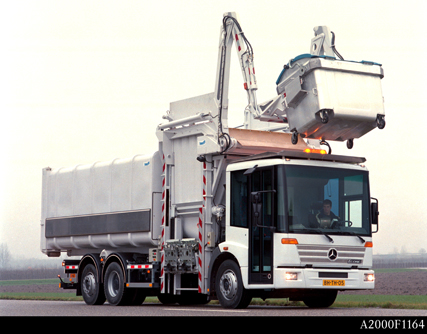By using our services, you agree that we use technically necessary cookies.

Jakobikirchhof 8
20095 Hamburg / Germany
www.consist-itu.de
By using our services, you agree that we use technically necessary cookies.

January 21, 2010: Company announcement
Yesterday, Daimler AG started use of the electronic records procedure at its plant in Bremen. They use the Modawi eANV solution by Consist ITU.
Hamburg – "We have already sent the first electronic consignment notes for three different types of waste at the Bremen plant. The pilot worked flawlessly, including the electronic signatures," says Ralf Bettac, responsible IT project lead at Daimler AG. In its plans to comply with the new legal requirements for the electronic waste records procedure starting April 1, 2010, the company has decided to integrate the Modawi eANV solution by the Hamburg company Consist ITU into its own waste management software provided by TRIAS.
Modawi can easily be implemented in the Trias AM waste management system, making it possible to implement eANV data traffic uniformly in all German Länder, since Modawi communicates directly through the ZKS. Consist ITU supported Daimler AG in all their questions about digital signatures and legal requirements, as well as in implementing the data exchanges with authorities and the ZKS.
Comprehensive introduction in all German plants
After the Bremen plant is complete, the plants in Berlin, Hamburg, and Wörth will follow, before the electronic records procedure is rolled out by April 1, 2010 in all 18 locations of Daimler AG who must dispose of hazardous waste. These pilot locations were selected with care, since they represent different business and production areas (production of passenger cars, trucks, motors, components), with entirely different production processes, different waste disposal partners, and located in different federal states.
Hazardous waste and its disposal at Daimler AG
Hazardous waste is produced during the manufacture of vehicles, such as used oil, paint sludge, and cooling lubricants, until now requiring about 7,500 consignment notes for proper disposal. The conversion of the waste records procedure from paper to the digital world will affect 18 German locations and 120 employees.
Before the pilot start in Bremen, many milestones had to be met in the project to convert to the electronic waste records procedure. General IT prerequisites had to be clarified, and the various installations of TRIAS unified. Signature authorizations had to be obtained for the digital signatures to be used, and suitable signature cards and card readers had to be tested, selected, and procured. Daimler AG now has 100 card readers and 120 signature cards available for eANV use. The timely start of the eANV project in November 2008 and the close cooperation between project management and the various local coordinators at Daimler AG contributed to the successful start of pilot operation.

